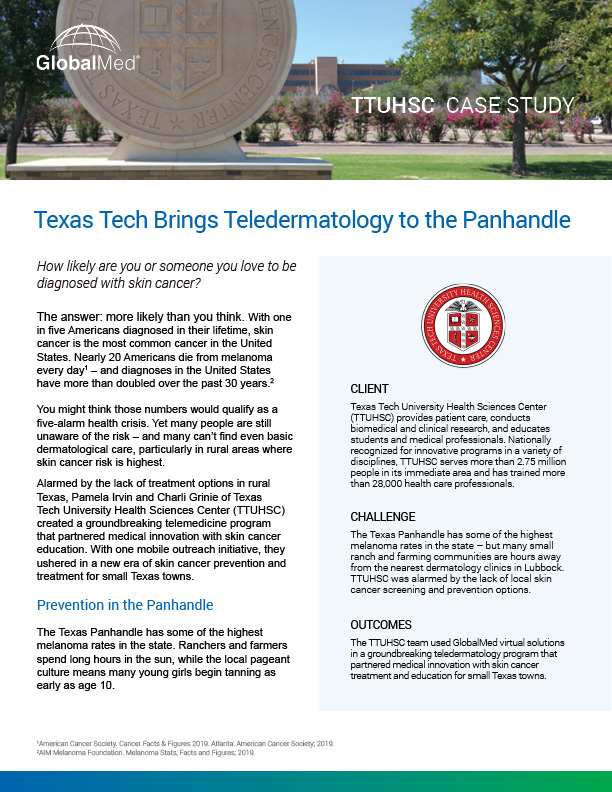 Limited access to specialty providers and internet connectivity continues to be a barrier to quality healthcare for rural communities worldwide. Rural patients typically have less income than those in urban areas, limiting their ability to afford care even if they can manage the travel to an urban location. Combine this with limited internet access in remote areas, the healthcare outlook for rural communities looks dismal.
Limited access to specialty providers and internet connectivity continues to be a barrier to quality healthcare for rural communities worldwide. Rural patients typically have less income than those in urban areas, limiting their ability to afford care even if they can manage the travel to an urban location. Combine this with limited internet access in remote areas, the healthcare outlook for rural communities looks dismal.
Geographic Gaps in Care
According to the National Rural Health Association (NRHA) rural areas have 39.8 physicians per 100,000 people, as opposed to 53.3 physicians per 100,000 in urban areas. Access to specialists is even lower with only 30 specialists per 100,000 residents compared to urban areas that count 263 specialists per 100,000 residents. Specialized providers usually gravitate to the larger patient pools found in cities. They may also be drawn to large universities or health systems that offer opportunities for research and teaching. While that’s an understandable preference, it can cost rural patients, who are also more likely to be uninsured and contribute more of their income to healthcare than urban residents.
Poor Access Can Equate to Poor Health
Rural patients often have higher rates of chronic diseases like diabetes, heart failure and COPD, as well as higher mortality rates. The NRHA reports that mental health is less likely to be treated in rural areas due to a lack of availability of mental health specialists and a higher level of stigma in seeking treatment. Conversely, suicide among rural youth is twice as likely to occur. Rural areas have higher occurrences of diabetes and coronary disease. Tobacco usage is higher in rural areas than in non-rural areas. Combine problems such as these with a per capita income that is about $9200 less than in non-rural areas, and we have the perfect recipe for a healthcare pandemic in America.
The repercussions are dismal for both patients and providers. Patients must choose between waiting months for appointments at clinics that are hours away or skipping specialty care altogether. Specialists try to address these shortages by visiting different clinics and hospitals on different days. Some pediatric clinicians are so specialized that they maintain multiple offices, driving from county to county each day – spreading their availability over a wider geographic area but also cutting into the number of patients they can see. And trying to manage the shortfall for multiple communities can also contribute to provider burnout.
Telehealth Advantages for Specialty Services
The good news is that virtual health can dissolve specialty care obstacles in several ways:
- Patients can connect to remote specialists – especially useful for rural patients or children in hospitals without pediatric specialists.
- Specialists can consult virtually in real-time during a PCP visit, helping them diagnose accurately and eliminating the need for an extra visit.
- Telemedicine’s immediacy can save lives after a stroke or heart attack, by connecting a paramedic to a neurologist or cardiologist in those first critical minutes.
- Specialists can provide care across a wider geographic area without having to drive to multiple offices or counties. If a patient cancels an appointment, it can be rescheduled quickly instead of waiting for the provider’s next visit to the patient’s area.
- Patients can potentially avoid the cost of traveling to distant hospitals or treating an advanced condition. Small hospitals can also create a sustainable income stream by offering telemedicine services that connect their patient base with remote specialty services.
Bridging the Digital Divide
The benefits of virtual care delivery hinge on a reliable Internet connection – and the Federal Communications Commission (FCC) reports that 31 percent of American rural households still lack access to broadband Internet. Neilsen Online reports 43.2 percent of the world’s population doesn’t use the Internet due to connectivity issues and a lack of modern technology. Solutions to close the gap in the digital divide with extended connectivity in areas that lack cellular signals or network coverage is now possible. In September 2020, the HHS issued a plan to improve rural health with a primary focus to expand the availability of telehealth services. The FCC recently offered grant opportunities under the COVID-19 Telehealth Program with plans to aware $250M in funding. This trend is expected to continue as it has become clear in the wake of COVID, how critical it is to expand access to virtual care solutions outside of urban centers.

